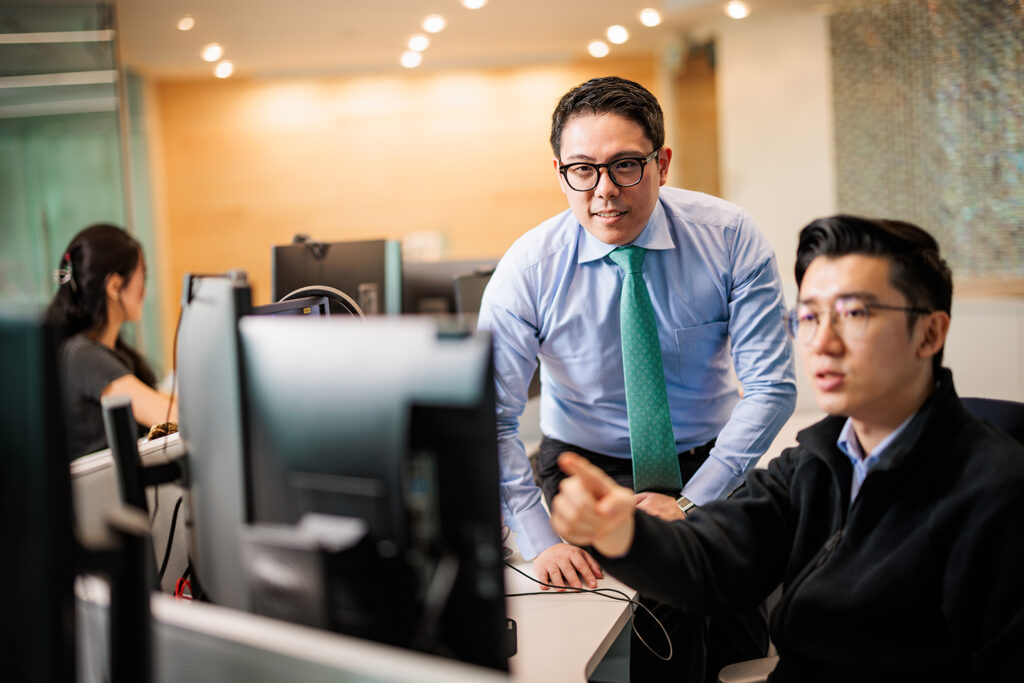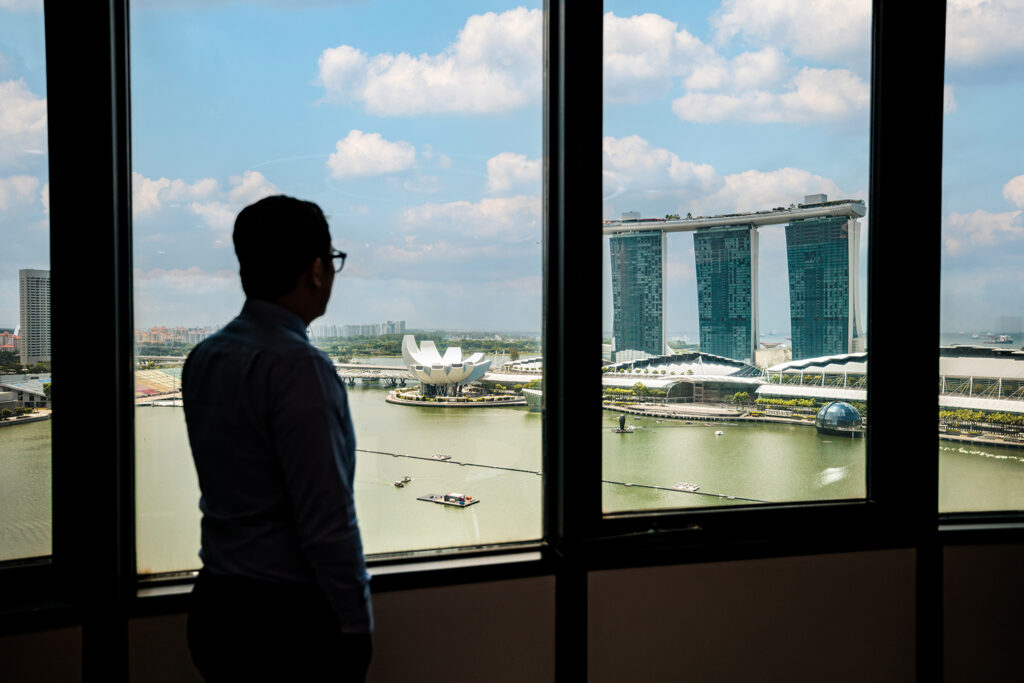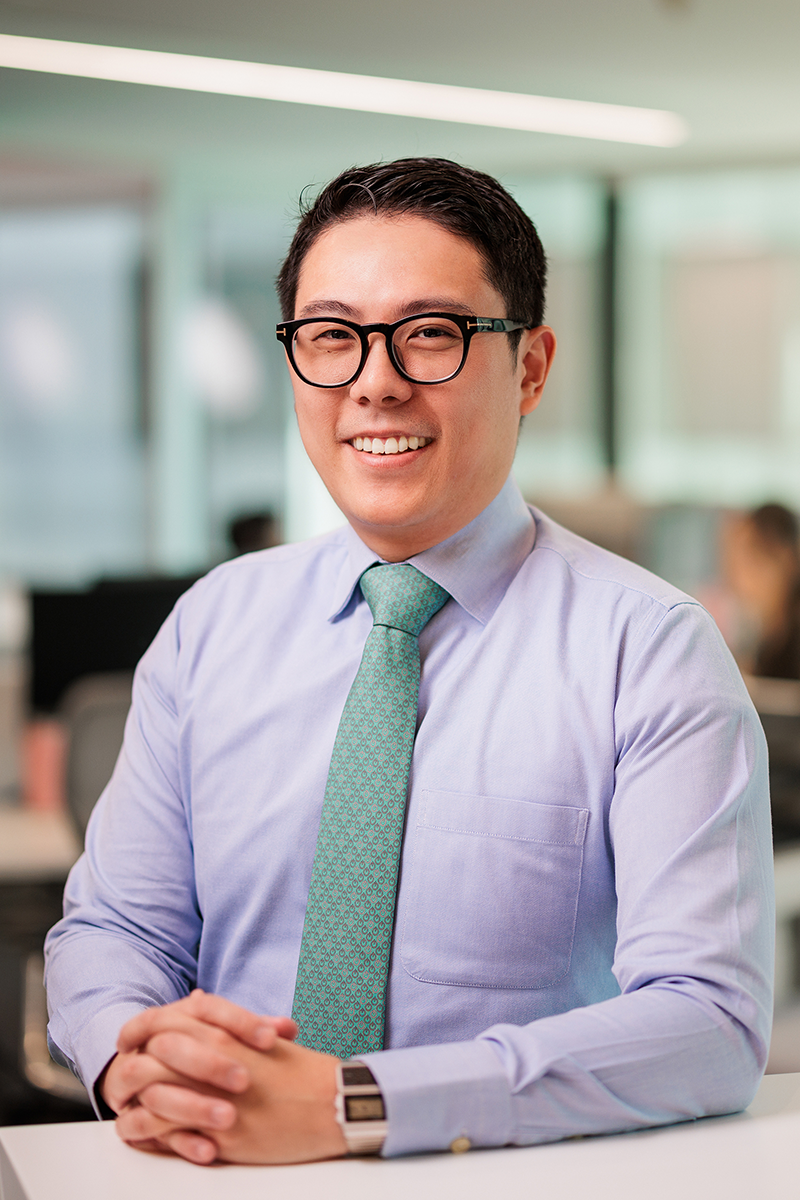Please tell us about yourself, and your experiences before joining P/E Investments
I was born in China, and immigrated to the United States when I was eight years old. Growing up on Long Island, I worked in my parent’s restaurant from a young age. I attended a very small public school, with a graduating class of less than 90 students. Thankfully, I moved on to study Economics and Political Science at Harvard University, graduated in 2010, and joined P/E’s Boston office that year.
How has your career at evolved at P/E?
Over the years, I have held many roles at P/E. When I first joined, my focus was operations, serving on the next day team, and then the same day team. I had the opportunity to travel with our CIO to visit investors in Asia. I was asked to produce a “Market Perspectives” piece each week. Over time, I found that I really love the markets and eventually, I transitioned to trading.
Describe your current role as part of the research and trading team.
A trader must be extremely careful and detail oriented. On a day-to-day basis, we process strategy rebalances, as well as investor flows. P/E offers derivatives-based strategies across multiple asset classes; so, we need to stay on top of happenings in the currency, fixed income, commodity and equity markets. We read a lot of news. We note that the markets change over time. Sometimes, investors are looking for opportunity, faster growth, higher rates. Other times, fear grips the market. We need to understand these changes, and be able to adapt.
We also explore new topics. For example, I am currently working with several others on a project to expand our modeling of emerging market currencies. This is especially important for Asian investors.

You serve as Branch Office Manager for the Singapore Office. Tell us about that transition.
Our goal over the past few years has been to expand our presence in Asia. It has been a long process. We started with two Investment Solutions staff in Singapore, with all trading done out of Boston. Prior to COVID, I agreed to launch trading in Asia. My then-fiancé left the U.S. first, to visit her family in Hong Kong. I told her that I would join her in Asia in six months – that ended up being two years. During COVID, our trading team was separated across two floors at 75 State Street, and our backup facility in Weston. I volunteered to work the overnight shift for seven consecutive months so that I could keep the same hours as my then-fiancé. When I finally flew to Singapore, I had to quarantine for two weeks. Moving to a new country is a tough task, and especially tough during a global pandemic.
How has your perspective on P/E changed since moving to Singapore?
One important aspect of P/E that hasn’t changed, is the sense of community. I have worked at P/E my entire career and consider this to be my extended family. Launching research and trading in Asia allows us to be truly global; but, we must work to maintain our culture. We have global trading meetings on a weekly basis. We meet with global operations and systems groups bi-weekly. Every day, a Boston trader comes in early so that we can discuss top-day markets. We also work to build camaraderie here in Singapore. We hold events, celebrate birthdays, and gather for lunch to watch trainings from Boston.

What do you like best about P/E?
When I graduated from Harvard, all of my friends wanted to work for big name banks; but, I chose the opposite route when I joined P/E. Most of my friends have changed jobs, some have changed jobs several times, or even changed professions altogether. I am still at P/E because here we work as a team. Everyone is willing to help each other because we know that we are all in it together. I have learned about the entire business, not just one function. I appreciate what each member of our team does to support our investors.
When we cannot find a suitable external solution to a problem, we solve it ourselves. For example, we looked unsuccessfully for an integrated trading and operations system that could support the many bells and whistles that our investors demand. So, we built it. I vividly remember the first anniversary of the system’s launch - the cake was delicious.
